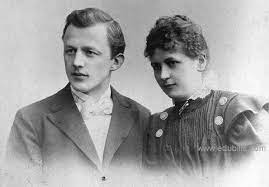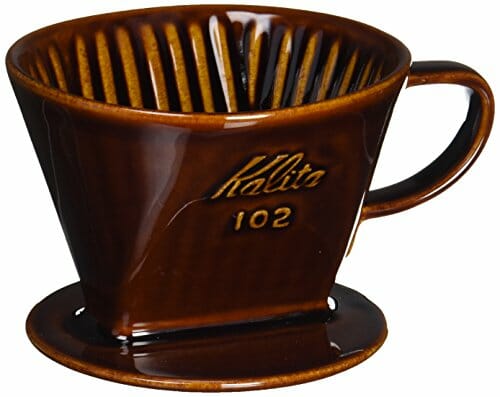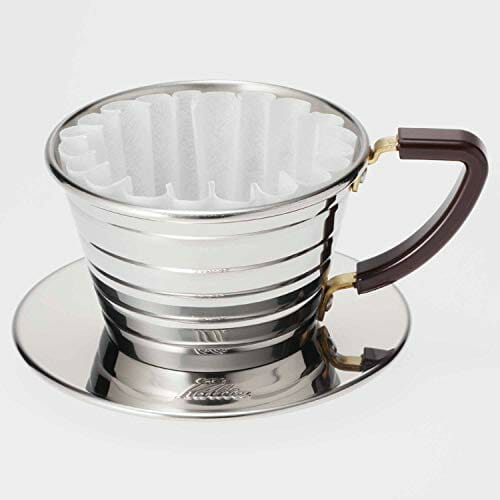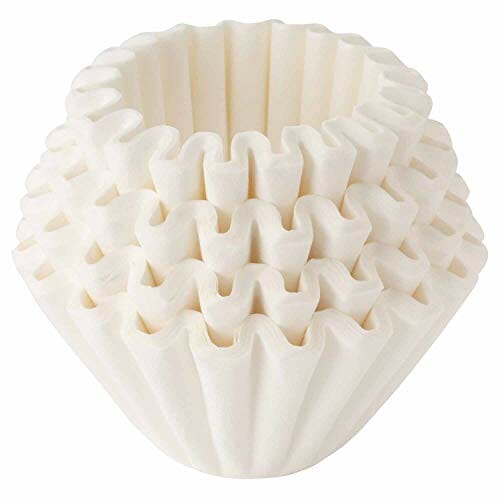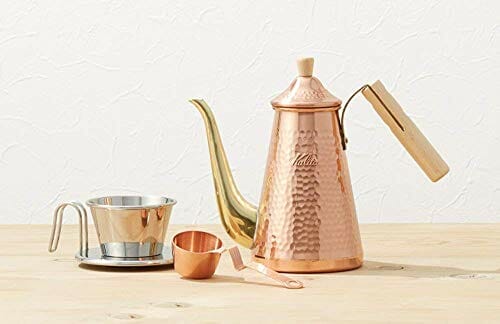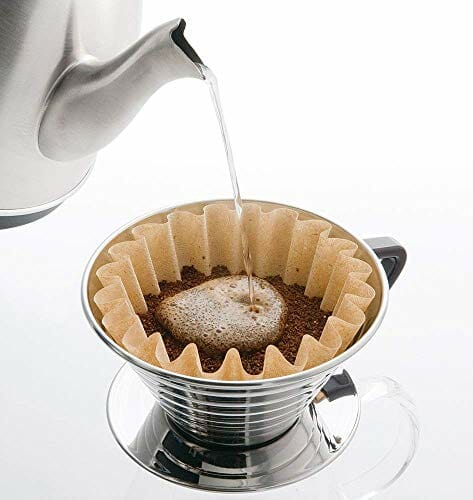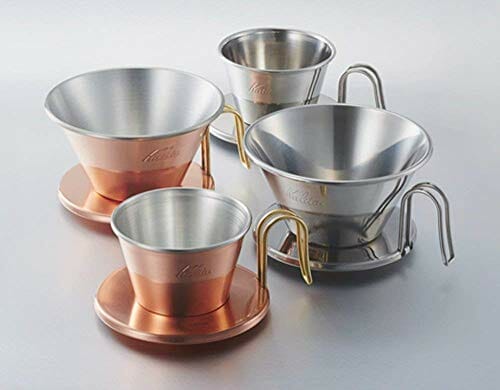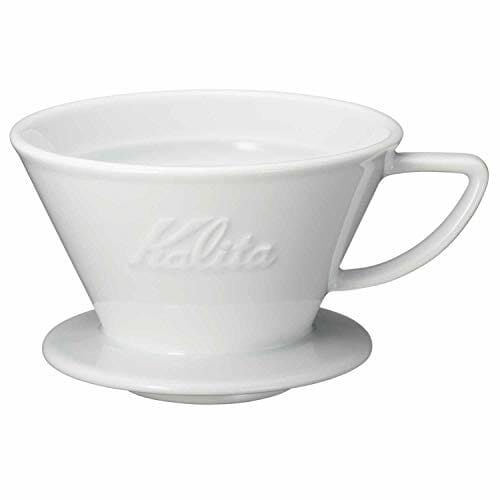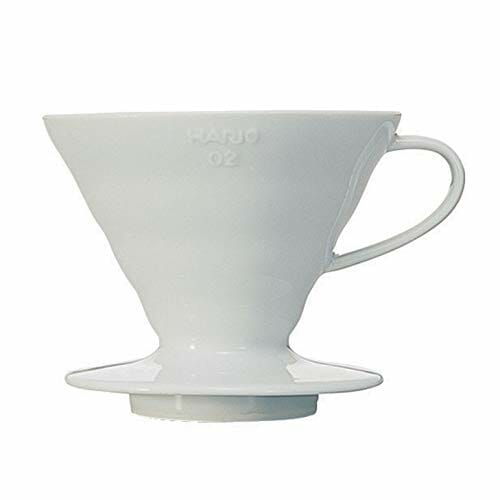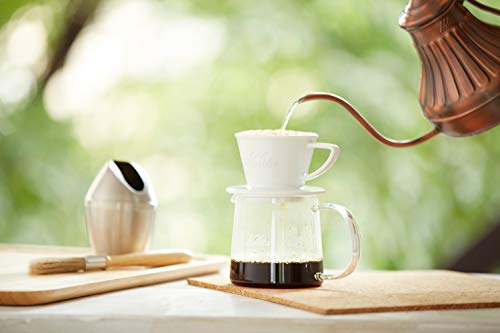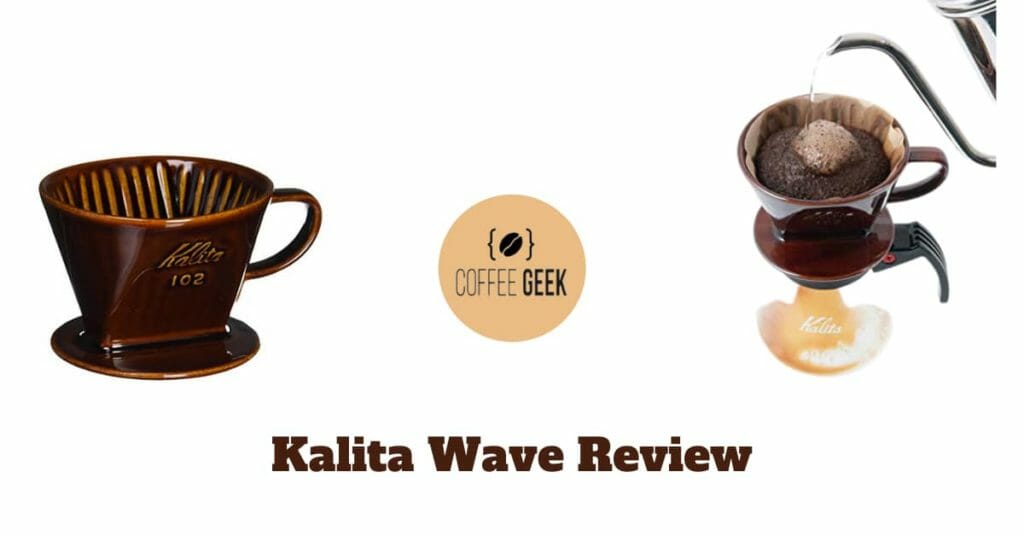
As most coffee enthusiasts know, there are so many more ways of making a tasty cup of coffee than just using the traditional espresso machine or automatic dripper.
The manual brewing methods have been around for a long time now and while most of us might be familiar with a French Press, the popular Aeropress, Hario V60, or a Chemex, the list of the manual coffee makers to put on your wish list never seems to end.
In this Kalita Wave review, we look into the origins of the brewer, explain how it works, and most importantly, explore the different aspects in which it will impact the brewing coffee-making experience as well as the resulting taste of your brew.
The Origin Story of the Cone Shaped Coffee Dripper
For years, people around the world prepared coffee by heating ground coffee in a boiling pot of water, as that has been the tradition in Saudi Arabia and Turkey.
Then the percolator, which brews coffee by repeatedly cycling the boiling brew through the grounds, was invented in 1810.
It became a traditional brewing method in Europe. By the early 1900s, a German-born woman named Amalie Auguste Melitta Bentz, was displeased with the taste of percolator coffee as well as the grounds left behind in her cup.
She began to sample different brewing methods and designed a technique using paper and a can which she punctured with a nail.
The subsequent brew was less bitter than percolator coffee and had fewer grounds left remaining. In 1908, Amalie filed a patent for the paper filter, and additionally, the Melitta company was established.
In 1909, Amalie and her husband Hugo, displayed their filters at the Leipzig Trade Fair and their product obtained major popularity and success.
During the 1930s, Melitta introduced the cone-shaped filters that we are familiar with today. By making a bigger area for extraction, this design enhanced the standard of coffee in each cup.
She also developed something more useful than a can to carry the filters. She designed an easy cone-shaped dripper device that sits on top of a cup or jug.
The first initial commercially available dripper had eight holes on the underside but changed to one hole within the 1960s.
Cloth coffee filters had been utilized in Southern America for several years, but the invention and commercialization of the paper filter was an enormous innovation in a way to make coffee.
Melitta is now a globally recognized company and its filters and dripper devices may be found in kitchens and cafés everywhere in the world.
The Appeal Of Manual Brewing
Why do people look for ways to make their coffee manually when you can get your coffee jolt with an espresso machine in a few seconds?
The convenience is not the big appeal of manual brewing methods, but by making a concentrated cup of coffee.
Coffee drinkers who change to manual brewing are not interested in making their coffee as fast as possible, they are eager to have more control over the brewing process.
Although the pour-over coffee may sound as simple as pouring some water over your coffee grounds, it is a subtle process that needs more effort and a certain sense of expertise.
The increased attention to detail rewards you with more delicate flavors and an interesting taste profile emerging from your cup.
Additionally, with the increasing popularity of specialty coffee and added attention put into details of coffee making, like expert sourcing and small-batch roasting of the beans, searching for a brewing process that exposes the tasting notes of these stimulating single-origin coffees is a natural part of the entire movement.
What Is A Kalita Wave Dripper?
Similar to the Melitta Dripper system, the Kalita Wave dripper is a pour-over brewing system commercialized by a Japanese brand, Kalita, that has been making coffee equipment since the 1950s.
The most unique feature of this brewer is that the contact surface between the filter and the inner dripper is divided by as many as twenty waves on the side.
The flat bottom with three holes contributes to the fact that the coffee does not amass but swiftly drips into your cup, creating a reliably delicious coffee.
What is a Wave Dripper?
The Wave Dripper features an even surface with its original wave filter to create an even and smooth coffee extraction.
This stainless steel coffee brewer is just as attractive as its glass counterpart without the looming threat of breaking.
We prefer this brewer because it’s able to provide a fuller flavor and more balanced extraction when it comes to the temperamental pour-over technique.
How To Brew Ground Coffee With A Kalita Wave Pour Over Coffee Maker
Bring the water to your required coffee brewing temperature, preferably 200°F. Insert your Kalita filter into the Wave dripper.
Gently rinse the filter with warm water to do away with the papery taste then warm the brewer and your cup. Be sure to not break the fragile filter, or alternatively, you could simply skip this step.
Put in 15g of your coffee at a medium-coarse grind. Pour 0.05L of water over your grounds within the first few seconds and let the coffee bloom for an additional 15 seconds to release oils and flavor.
Pour an additional 0.13L of water within another 15 seconds over the coffee during a circular motion within the center and leave it for another 15 seconds.
Pour the last bit of water over the grounds. Wait and let the coffee fully drip into your cup, throw away the used filter and rinse the Kalita.
Ease Of Use
As far as different pour-over methods go, the Kalita Wave is among the easiest ones to use.
What separates it from hundreds of the many other pour-overs, is the flat-bottom design and three small holes for easier and more predictable extraction.
The design of the base creates enhanced flow control in coffee, which therefore means that the resulting cup is steady and the minor intricate details during the brewing process don’t impact the taste of your cup that much.
Filters
Just like any pour-over, you’ve got to get the proper filters that are specifically made for that brewer.
While the iconical V60 filters allow subtle and acidic notes from the coffee to sift through differences between various pour-over methods. The majority have an innovative design with large wavy, upright ridges.
Aside from looking sort of like a cupcake, these ridges perform a functional role within the brewing process.
They separate the layer of grounds far away from the Wave, which lets air pass in-between which protects the coffee and prevents the cone from sucking the warmth out of the liquid.
The upgraded airflow of the filter increases the speed of the water movement, refining the flow rate as well as providing even coffee extraction.
The air also functions as protection from the dripper, improving heat retention.
The filters, however, also are where the challenges with the Kalita Wave come from.
The other unfortunate issue is that they’re quite fragile, and you can’t just throw them in your cupboard.
Because if they’re not stored properly, they can be easily damaged.
Size And Material
As far as size goes, there are two forms of drippers to settle on from. The Kalita 155 may be a single-cup dripper and therefore models like the Kalita Wave 185 are acceptable for brewing 2-3 cups of coffee.
You can make a choice from three different materials too. The dripper comes in ceramic, glass, or a chrome steel version. The stainless-steel version is the most prevalent and unbreakable one.
A Classic Look – the stainless steel version is king
The wavy design may be quite visually pleasing and seems more traditional and a little less modern looking than the Japanese brand, Hario.
The cone conveniently fits on top of any cup or coffee server and also the horizontal lines enhance the ripple design of the coffee maker.
Kalita also produces kettles in the matching design which might make the 2 attractive aesthetic pieces on your kitchen top.
Less Control, More Consistency
For many serious coffee drinkers, the technical aspects and features don’t matter as much because the most vital aspect of a coffee maker, is of course the taste.
Due to its unique brewing design, the coffee made with Kalita embraces a more vigorous taste than other pour-over coffees.
But it still has more subtle tasting notes than coffee made with the French Press. To some extent, you’ll bring out more acidity and bright flavors by retaining a coarser grind.
Filters Posing A Challenge
As is the case with the V60, the cone is transportable and compact enough to travel around with.
Should you go for the stainless steel version, it is practically indestructible. This makes it easy to make a cup of tasty brew for camping or traveling.
Also, the Kalita Wave brewing system ensures that your cup of coffee will taste good even when you can’t pay attention to the last detail of the brewing in an unplanned situation.
As both the Kalita Wave 185 and 155 are both easy to transport and throw into your coffee travel kit, the same can not be said for the filters.
As we mentioned before, they are very flimsy and they need to be stored properly not to break, which is near impossible when you are on the go.
Is It Value For Money?
The Wave has been compared to other pour-over coffee makers. It’s cheaper than buying a Chemex but more costly than a V60.
Price probably wouldn’t be the deciding factor when choosing this type of brewer.
The choice will depend totally on whether you like the consistency, ease of use, and a more robust cup of coffee you get with the Wave or more control over your brew.
The Kalita Wave 155 Vs 185
There are two ranges of Kalita drippers, the Kalita Wave 155 and Kalita Wave 185.
They both share an identical design, brewing mechanism, and a flat bottom with three small holes.
The biggest difference is in the size and the way in how much coffee they are able to brew.
The smaller Wave 155 brews around 1 big cup of coffee with 18g of grounds and 300ml of water.
The larger Wave 185, makes around 2-3 cups of coffee and handles 500ml coffee-to-water-ratio.
The coffee maker you decide on depends on what quantity of coffee you expect to brew.
If all you wish is to fill your travel mug at daybreak, opt for the smaller 155 version and if you are aware that you’ll be making multiple coffees at a time, the larger 185 would suit you more.
Kalita Wave Vs Hario V60
To the unfamiliar, these two pour-over coffee makers may look alike. However, while there are similarities, their brewing systems and features differ significantly.
We aren’t saying that one is more superior than the other, your personal preferences will determine which one is more suitable for you.
If you’re searching for a manual pour-over maker that offers you some control over your cup but produces a perky and consistent brew, you won’t get it wrong by buying a Kalita dripper.
The Hario V60 will provide you with even more control over the resulting cup. And since the brewing is more delicate, not paying attention to the minor specifics can change how your coffee tastes.
If you favor a less robust and bitterer brew, the V60 is going to be the top choice.
Also, the V60 is moreover intended for people who are advanced in coffee tasting, or rather willing to acquire the taste since it’s quite unforgiving.
While the Kalita is suitable even for a beginner.
Is the Kalita Wave For You?
In our opinion the Kalita Wave is the most unsurpassed all-rounder drip-brewer. It’s affordable, tough, movable and makes a stable, delicious cup of coffee with little to no practice.
It’s not for everybody though. Some of its features are a slight bit idiosyncratic and it’s probably not recommended for the utilitarian, caffeine-fix, work all hours coffee drinker.
Pause for a little and ask “What kind of coffee drinker are you?” “Would the Kalita Wave fit your personality and tastes?”
A general problem with the Kalita Wave.
Users have complained about their Kalita Wave choking at the end of the brewing process.
Other than brew time, choking can strike you if you are used to certain recipes or roast beans. This commonly happens when you let the grounds dry between pours.
How to Fix Choking?
You can reduce choking by changing your pouring. If you are pouring about eight times per brew, then you will likely have a lot of turbulence. Therefore, decreasing to something like 3 times per brew can prevent choking.
You should be cautious about how you are seating the filter. When it is held down when wetting, you might only get about one to three holes dripping. A good idea would be to let the filter just sit slightly at the bottom before wetting.
Pros
- It’s one among the notable welcoming pour-overs, and makes a consistently good coffee.
- It features an advanced brewing system as well as the characteristic wavy design,
- Has different materials and sizes to settle on from, making it a good option.
Cons
- Less control over the resulting brew
- As well as the flimsy filters that call for proper storage.
Kalita Wave Review Verdict
We are massive fans of manual and pour-over coffee makers as they supply you with more control over your cup and are the absolute best at bringing out the fragile flavor notes of your single origin.
We think that there’s no better way of experiencing the fruitiness of Kenyan beans or the chocolaty flavors of Brazilian coffee than with a pour-over method.
As a whole, if you don’t own a pour-over coffee maker and you’re searching for an entry-level one that’s easy to use and produces a tasty cup of coffee, don’t hesitate to get the Kalita Wave.
Sources
https://en.wikipedia.org/wiki/Melitta_Bentz

